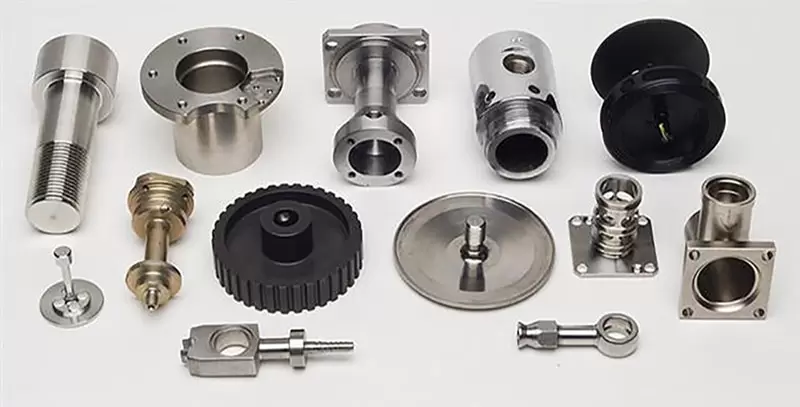Looking for CNC machined components that offer precision engineering and exceptional quality? [Your Company Name] specializes in manufacturing high-quality CNC machined components for a variety of industries, including [list relevant industries]. Contact us today to learn more about our capabilities and how we can deliver the perfect CNC machined components for your needs.
Table of Contents
I. Introduction
II. Types of CNC Machined Components
III. Materials Used in CNC Machined Components
IV. Factors That Affect CNC Machining Accuracy
V. Quality Control in CNC Machining
VI. Applications of CNC Machined Components
VII. Choosing the Right CNC Machined Component Manufacturer
VIII. Conclusion
I. Introduction
CNC machining has become an integral part of modern manufacturing processes, offering unparalleled accuracy, supreme precision, and exceptionally high-quality machined components. In today’s fast-paced world, it’s essential to minimize errors, maximize efficiency, and produce the best possible parts for various applications. That’s where CNC machining comes in, making it possible to create components that meet tight tolerances, complex geometries, and exacting specifications. In this article, we will delve into the world of CNC machined components, exploring the different types, materials, factors that affect accuracy, quality control measures, applications, and how to choose the right manufacturer.
II. Types of CNC Machined Components
CNC machining can be used to create various types of components, including but not limited to gears, shafts, housings, enclosures, brackets, connectors, and brackets, among others. CNC machines primarily use 3-axis, 4-axis, or 5-axis milling, turning, drilling, or grinding to produce machined parts with high accuracy and repeatability. Each type of part has unique design and manufacturing requirements, and it’s essential to select the most appropriate type of machining method to achieve the desired results. For example, milling is often used for creating flat or complex surfaces with tight tolerances, while turning is ideal for cylindrical parts with intricate profiles.
III. Materials Used in CNC Machined Components
CNC machines can process various materials, ranging from metals like aluminum, steel, brass, titanium, and copper to plastics like polycarbonate, nylon, and ABS. The choice of material depends on the intended application, cost, strength, durability, thermal conductivity, conductivity, machinability, and chemical resistance, among other factors. Aluminum, for instance, is commonly used in aerospace and automotive industries due to its high strength-to-weight ratio, thermal conductivity, and corrosion resistance. Brass is popular in electronics and plumbing applications due to its high machinability and electrical conductivity.
IV. Factors That Affect CNC Machining Accuracy
Several factors can impact the accuracy of CNC machined parts, including the quality of the machine, the skill and experience of the operator, the cutting parameters, the tool/fixture/toolholder design, and the workpiece’s material properties. It’s critical to optimize these factors to minimize the errors that can arise during the machining process. For example, a poorly designed fixture can lead to vibration and thermal expansion, causing dimensional inaccuracies. Similarly, an operator’s lack of knowledge or adherence to best practices can cause tool wear, chatter, deflection, or incorrect tool selection.
V. Quality Control in CNC Machining
Quality control measures are essential in CNC machining to ensure that the finished parts meet the required standards and specifications. Common practices include inspecting the parts’ dimensions, surface finish, hardness, concentricity, straightness, roundness, perpendicularity, and roughness, among others. A variety of tools and techniques can be used, such as coordinate measuring machines(CMMs), digital microscopes, profilometers, gauges, micrometers, and other measuring devices. These measures help identify defects before the parts are shipped to the customer, preventing costly errors and maintaining product integrity.
VI. Applications of CNC Machined Components
CNC machining plays a significant role in many industries and applications, including aerospace, automotive, medical, defense, electronics, and manufacturing. Machined components are often used where precision, accuracy, and quality are critical, such as in engines, hydraulic systems, pumps, valves, sensors, connectors, and other critical systems. The use of CNC machining enables manufacturers to produce high-quality parts with fine details, intricate geometries, and high accuracy, improving system functionality, efficiency, and reliability.
VII. Choosing the Right CNC Machined Component Manufacturer
Selecting the right manufacturer is essential for getting high-quality CNC machined components that meet the desired specifications and requirements. It’s crucial to consider various factors when choosing the right manufacturer, including the company’s experience, facilities, equipment, capabilities, quality assurance practices, price, delivery time, and customer service. A reputable manufacturer will have the necessary expertise and resources to handle complex and demanding CNC machining projects, ensuring that you get the best value for your investment.
VIII. Conclusion
CNC machining has come a long way in revolutionizing modern manufacturing and delivering high-quality machined components that are critical in various industries and applications. Understanding the different types of components, materials, factors that affect accuracy, quality control measures, applications, and choosing the right manufacturer is essential for getting the best results. Whether you’re looking to produce aerospace components, automotive parts, or medical devices, CNC machining can help you achieve exceptional product quality, efficiency, and reliability.




